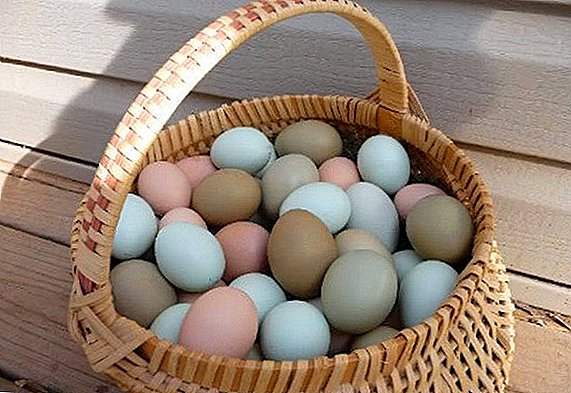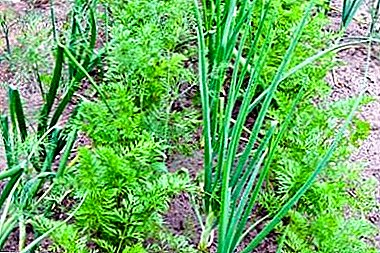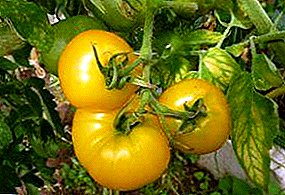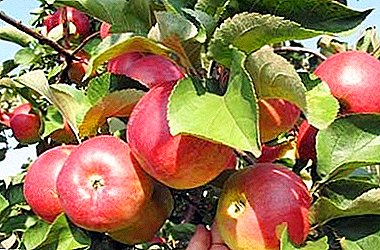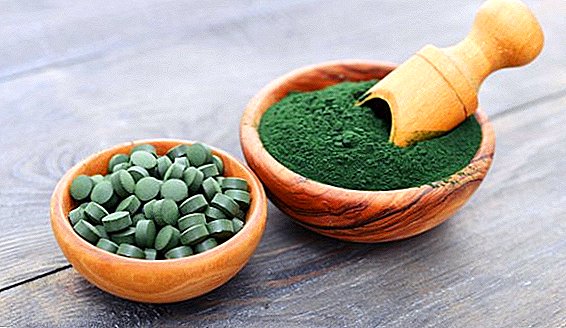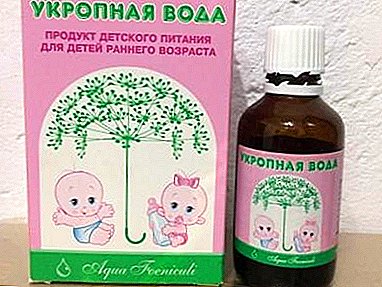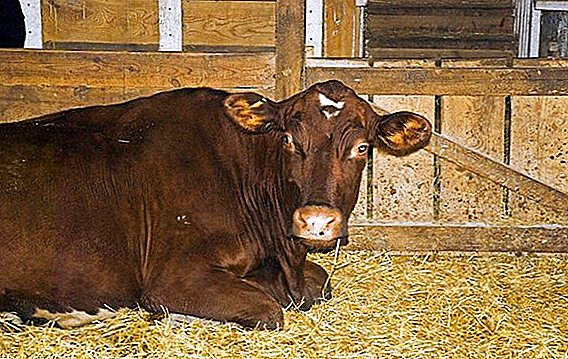 The process of childbirth plunges any organism into a stressful state, which can result in complications, for example, cows are sticking during the postpartum period.
The process of childbirth plunges any organism into a stressful state, which can result in complications, for example, cows are sticking during the postpartum period.
Consider why cows are lying down, what are the symptoms of this condition, how to help the animal and prevent this phenomenon in the future.
Reasons for fooling
Sometimes cows can not get on their feet only immediately after childbirth, and sometimes for a long time after their completion. All the efforts of the animal to stand up are unsuccessful, because of which it may even stop trying.  The main causes of this pathology are:
The main causes of this pathology are:
- poor-quality feeding of the cow during the bearing of offspring;
- injuries and fractures in the pelvic region during labor or pregnancy;
- pinching of the obturator and sciatic nerve;
- wrong, untimely help of a person during the birth of large calves;
- stretching the joints of the pelvic and sacral bones;
- muscle inflammation or injury;
- limited activity of the cow during gestation of offspring.
Important! Even wintering in cramped and uncomfortable conditions can be the cause of a stay. Cows need good living conditions to maintain overall health.
Symptoms of postpartum pathology
The most important symptom is that a cow that has been left out is trying to get to its feet with all its might, but it does not work. Veterinary examination of the animal shows weakness of the back of the body while maintaining sensitivity and motor functions.  Sensitivity is checked by irritating the skin of a hoofed needle. If the limb moves away from the injection, the sensitivity and functionality are preserved.
Sensitivity is checked by irritating the skin of a hoofed needle. If the limb moves away from the injection, the sensitivity and functionality are preserved.
Since the causes of pathology can be sprains and fractures, the veterinarian examines the animal for visible changes and swelling, examines the pain of the affected area.
Did you know? In India, the cow is considered a sacred animal. It is a symbol of abundance, fertility and land.
Diagnostics
Diagnosis is directly related to the presence of symptoms. First of all, exclude the traumatic factor in the occurrence of this pathology. After finding out the cause of the vigilance, they proceed to the prescription of treatment and prognosis for recovery.
Forecasts may be different. If there are no serious traumatic factors in the causes of the pathology, then the hoofed will be able to get up in 3-10 days. If the reason for sticking is serious, then this disease can even end in the death of the animal, since there is a general depletion of the body, there are pressure sores.  Congestive pneumonia, prolapse of the genital organs, constipation and sepsis can begin.
Congestive pneumonia, prolapse of the genital organs, constipation and sepsis can begin.
How to treat
Treat this pathology, above all, starting from symptoms. Also, the animal must provide special care and conduct regular manipulations. It is necessary to monitor the quality of food, add to the feed sprouted grains of oats and wheat, carrots, grass and vitamin D.
It is necessary to increase the amount of minerals in food, it is useful to add fish oil to it.
Important! Never self-treat pets. If you experience any symptoms other than the normal condition of the cow, contact your veterinarian.
Comfortable conditions
In order for pressure sores not to appear, so that the animal is not frozen and not sick, it is necessary to create comfortable conditions for it.
It is necessary:
- lay a clean and soft bedding;
- ensure the cow is kept in a warm and dry room;
- take care of good ventilation of the room.

Rub the back to improve blood circulation
To improve blood circulation, help the healing of the affected areas, massage is performed, and rubbed sore areas with camphor or mustard alcohol. You can also make warming bandages on the lumbar region and the sacrum.
Intramuscular and intravenous injections
Drug treatment prescribed for difficult course of the disease.
The cow is treated:
- anti-inflammatory drugs;
- antibiotics;
- painkillers;
- antispasmodics.
Did you know? Cows, like people, taste sour, bitter, sweet and salty.
Intramuscularly in the area of the croup injected alcohol solution "Veratrin" (0.5%) 0.5-1 ml in two or three points on each side. In total, the animal receives from 4 to 6 ml of the drug at a time. If necessary, the procedure is repeated after a few days. Tetravit or Trivitamin is also administered in a dose of 10 ml.  A solution of glucose (40%) and calcium chloride (10%) in the ratio of 200 ml to 100 ml is injected intravenously. Subcutaneously give a solution of caffeine (20%) in an amount of 10 ml.
A solution of glucose (40%) and calcium chloride (10%) in the ratio of 200 ml to 100 ml is injected intravenously. Subcutaneously give a solution of caffeine (20%) in an amount of 10 ml.
When growing cattle, there may be such a problem as avitaminosis. And also find out what to do if the cow is full of shreds and how to wean the cow.
Flip and lift slightly
Several times a day, the animal is turned over from one side to the other in order to avoid pressure sores. They also help the cow to rise with the help of ropes or a special hanging apparatus.
Since, in a normal state, in order to get up, the artiodactyls first raise the pelvis, then they must be raised behind the back part, and then they will be able to lift their upper limbs. 
How to prevent such problems
To prevent such a pathology is much easier than to cure an animal.
Prevention consists of:
- proper nutrition;
- active lifestyle - walking in the street;
- providing skilled care during childbirth;
- comfortable living conditions.
Important! In the barn there should be a flat floor so that the cow’s limbs do not strain too much when standing.
The cow during postpartum sticking badly needs human help. In time, contact the vet, follow all the instructions, and then your animal will be healthy and full of strength again.


